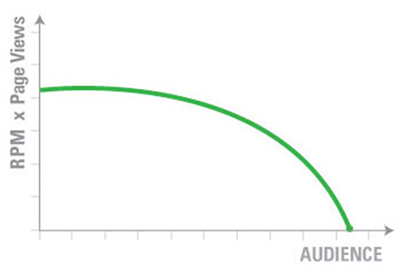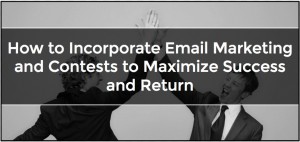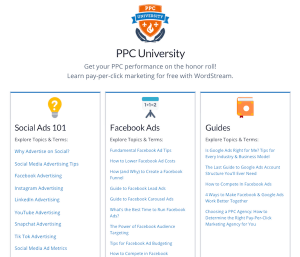
Digital technologies have fundamentally changed the way that information is shared and consumed—profoundly impacting the Information and Media industry. For the past 15 years, Information companies have been making the switch from print to digital. The switch has driven innovation in advertising, a convergence of content, software and devices, but, most importantly, a transformation of business models. New business models that rely even more on the ability to retain and monetize an audience, making a loyal audience the most profitable audience.
So the question becomes: “How do you manage customer retention and build a loyal audience?” While it is common industry practice to state monthly unique visitors and page views, it is rare to find a report that combines the two statistics to breakdown page views by audience member. When monthly unique views remain separated from page views, a distorted view of engagement is created that hurts advertisers and information publishers.
To unravel this question, let’s look at these important points around customer retention and loyalty:
- What is the distribution of page views in a typical audience?
- Why is engagement important?
- How does that impact advertising performance and revenue?
Page View Distributions
If you rate audience members by their frequency of visits, you can define audience members by level of engagement:
- Fly-bys – individuals that only visit once
- Occasionals – individuals that visiting 2-3 times per month
- Regulars – individuals that visit 1-2 times per week
- Fans – individuals that visit more than 2 times per week
On the image below, the top chart shows the percentage of the audience by category and the bottom chart shows the percentage of page views by category. In a study of one of our B2C customers, 80 percent of the page views were delivered by 25 percent of the audience. Generally, our study found the B2B percentages had slightly less distortion with 66 percent of page views delivered by 30 percent of the audience. The difference in distributions was attributed to the specialized nature of the B2B publications.

The Importance of Engagement
In further analyzing our Information and Media Services customer base, we found that the more a user is engaged with content the better the brand-recall and conversion rates for the included advertisements. Intuitively, this makes sense–the chance to grab the attention of a Fly-by is much less than the chance to grab the attention of Fan who reads the entire article.
Understanding the engagement of audience members will help you price and package your inventory of impressions with much higher yield and deliver better product to your advertisers.
Impact on Performance and Revenue
Now let’s put the previous two points together with an example to show how the right customer engagement really is everything to this industry. Let’s assume 75 percent of your audience are Fly-bys producing 20 percent of impressions. With a 75/20 distribution, the actual audience demographics associated with page views are highly skewed to the Fans, not the Fly-bys.
Assume the advertiser and publisher have agreed to frequency caps on impressions delivered to the audience. In this case, Fans will quickly be capped and the Fly-bys will be responsible for generating the remainder of the impressions. Consequently, the campaign will have to last longer to deliver the number of purchased impressions and will have marginal performance because the engagement of Fly-bys is low. Unless the Information service is managing inventory at the impression level rather than placement level, the yield (a.k.a. revenue) will drop as frequency caps by the fans is pegged quickly. Again, both performance and revenue are negatively impacted.
The Revenue Model
Because audience engagement is the unit of monetization and because each member engages differently, the revenue contribution and profitability of each audience member varies. For example, assume a Fly-by audience member generates on average three page views. With a $ 30 RPM, each Fly-by is worth $ 0.09 in revenue. Now compare that to a loyal Fan generating 100 page views a month or $ 3 of revenue per month (i.e., $ 36 per year).
The revenue model can be plotted as shown in the figure to the right. Charting audience versus their revenue contribution illustrates the revenue model for a publisher. On the left, highly engaged fans contribute good revenue and on the right, each Fly-by generates a small incremental amount of revenue.
The Cost Model
Aside from advertising sales, the two primary costs in digital media are associated with producing loyal customers, namely audience development and editorial. Since a target audience is finite, acquiring new audience members becomes increasingly expensive as the size of the audience grows, due to the decreasing number of potential audience members remaining. Additionally, as the audience grows so will the diversity and the need for a broader range of content at a larger editorial cost. The increasing cost to acquire and engage the audience is making customer retention and loyalty even more important.
The Profit Model
Aside from advertising sales, the two primary costs in digital media are associated with producing loyal customers, namely audience development and editorial. Since a target audience is finite, acquiring new audience members becomes increasingly expensive as the size of the audience grows, due to the decreasing number of potential audience members remaining. Additionally, as the audience grows so will the diversity and the need for a broader range of content at a larger editorial cost. The increasing cost to acquire and engage the audience is making customer retention and loyalty even more important.
Of course profits are made when the cost model is below the revenue model. For the fly-by to be profitable, the cost to produce the content and acquire the page views of the fly-by needs to be below $ 0.09. Acquiring an audience of 30M fly-bys per month would only generate $ 2.7M in revenue per month or a little more than $ 32M per year but the costs of that are likely to be much higher (e.g., Demand Media cost model). By contrast, the cost to produce the content and acquire the page views of the loyal fan needs to be less than $ 3 per month to be profitable.
Audience development and editorial has to be optimized for either building a loyal audience of Fans or grabbing Fly-bys.
A loyal audience is made up of all the visitors after you take out the Fly-bys and typically constitutes about 20 percent of the unique visitors. However, they are responsible for about 80 percent of all page views. This means that 80 percent of the revenue capacity (i.e., ad inventory) comes a strong customer success management strategy while about 20 percent come from Fly-bys. So even though Fly-bys make up the vast majority of unique visitors, their revenue contribution is astonishingly low.
In other words, generating revenue from Fly-bys is the same as chasing page views, but customer retention and building customer loyalty is a growth strategy. As audience buying and selling has evolved in the digital age, engagement with existing customers has become the most critical factor. Learn more on driving customer engagement by downloading, “The Definitive Guide to Revenue Lifecycle Management.”
Business & Finance Articles on Business 2 Community(53)
Report Post








